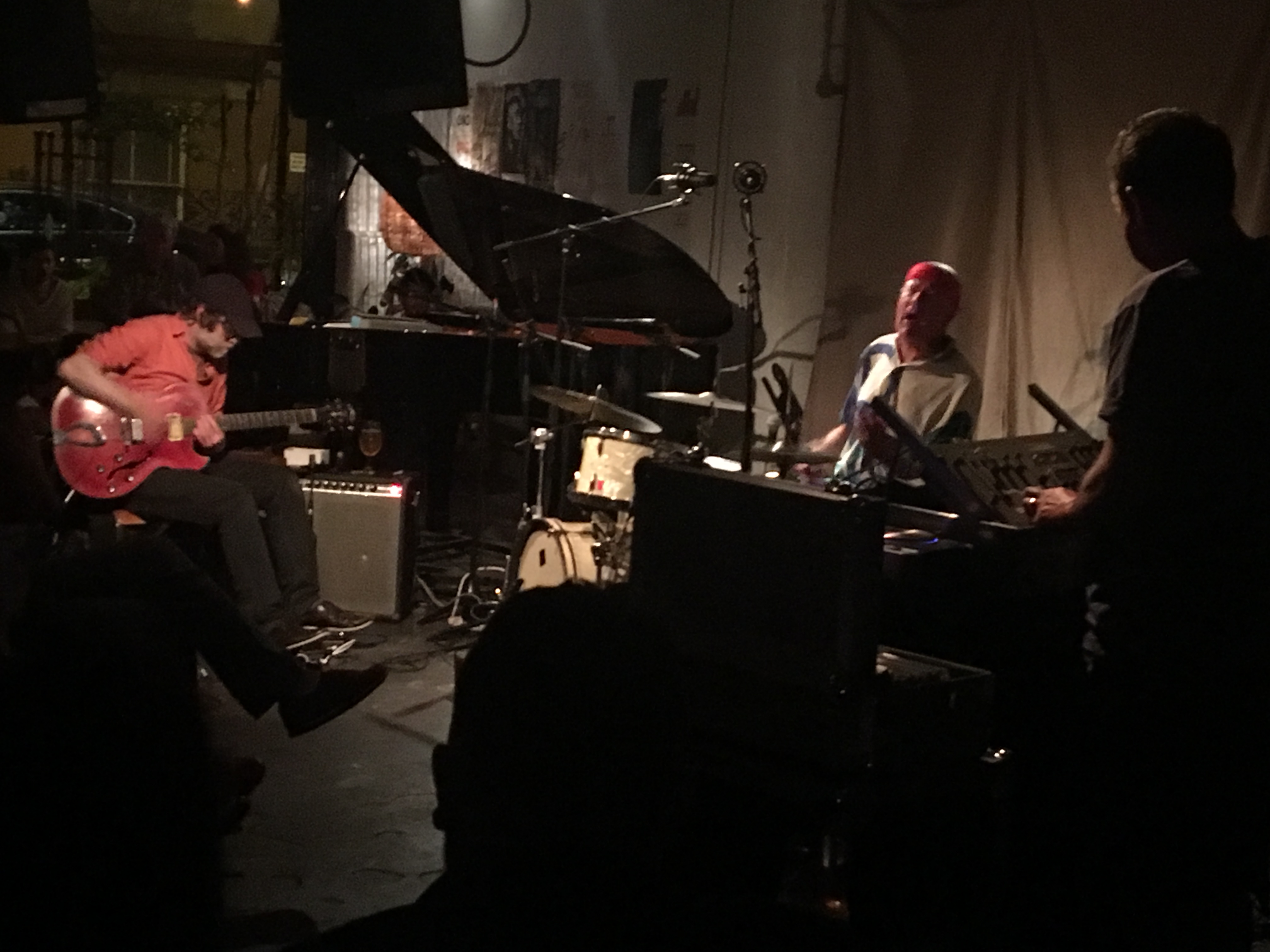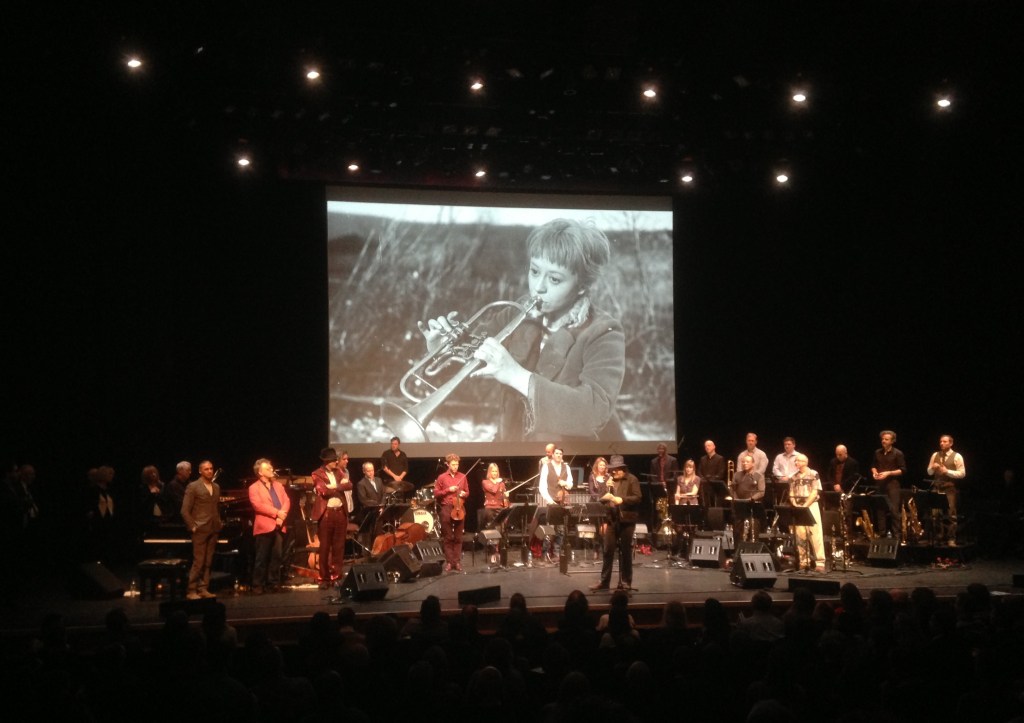A happy birthday

The pianist Steve Beresford is celebrating his 70th birthday this weekend with three shows at Cafe Oto, mixing and matching friends and colleagues each night under the rubric PIANO TOYS MUSIC NOISE. The bill is a fine reflection of the generosity of spirit that has made Steve a key figure in the London scene for four and a half decades, whether as a collaborator with Derek Bailey, the Flying Lizards, John Zorn, Tristan Honsinger, Evan Parker, the Dedication Orchestra and countless others or in his role as a senior lecturer at the University of Westminster.
Last night I particularly enjoyed a half-hour set by a quartet of musicians (pictured above) who hadn’t played as a unit before. Douglas Benford played various instruments, including bowls and a miniature harmonium; Hyelim Kim played a taegum, a big-bore bamboo flute from Korea; Martin Vishnik played an acoustic guitar; and Crystabel Riley played a drum kit with no cymbals and two bass-drum pedals. It was the sort of collaboration that gives free improvisation a good name: all four musicians listening hard, giving each other space, alert to signs, not afraid to gives cues of their own. The playing was exquisite, making effective use of the silence, the breathy sounds and the bell tones that this music has absorbed from Far Eastern idioms (most obviously Buddhist rituals), grounded in Riley’s truly extraordinary contribution: an underscore of rumbling and tapping, permanently in movement without seeming restless or overbearing, always alert to shifts in the music’s density and trajectory and ready to orchestrate, with Vishnik’s help, a truly gorgeous ending.
Steve himself played first with the violinist Satoku Fukuda and later with David Toop and Peter Cusack, his old colleagues from Alterations. Tonight and tomorrow the programmes will include a performance of John Cage’s “Indeterminacy”, Steve’s duo with the violinist Mandhira De Saram, and the pianist Pat Thomas playing Ellington. Not a bad birthday party, all told.
* Details of tonight’s and tomorrow’s programmes on the venue’s website: http://www.cafeoto.co.uk/events/


